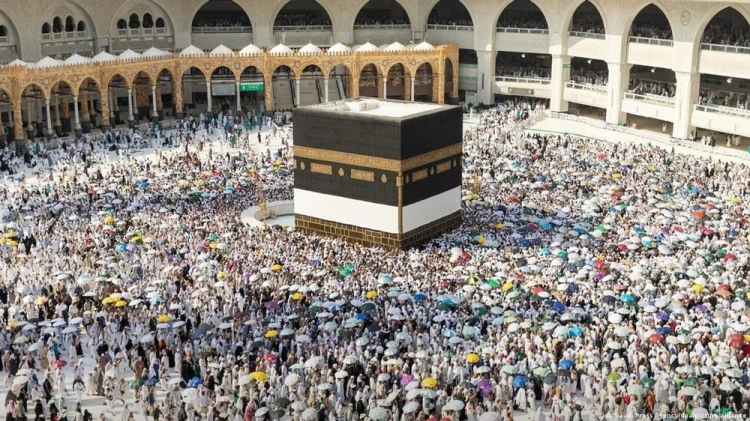
Kyrgyzstan and Its Tourist Resources Tourism in the world is based on the targeted and reasonable...

The Islamic religion is represented in the republic by two schools (madhhabs) of Sunni tradition —...

Tourism in Kyrgyzstan Tourist resources are understood as a set of natural and artificial...

Unlike the settled peoples of Central Asia, the Kyrgyz were the last to adopt Islam. It is...

The agency noted that this portal was created to simplify the application process, increase...

Bishkek from March 25, 1999 No. 34 LAW OF THE KYRGYZ REPUBLIC ON TOURISM...

The Power of Motherhood Many tales are dedicated to the woman-mother. Here is one of them. Once...

The Valley of the Sacred Springs of Manzhyly-Ata Located on the southern shore of Issyk-Kul, in...

Author: Aziza Berdibaeva...

Almost two million tourists visited Kyrgyzstan since the beginning of the year. As stated by the...

Rest in Kyrgyzstan has been recognized as the best according to "National Geographic,"...

The flora of Kyrgyzstan is remarkable for its many endemics When discussing the flora of the...

Alongside Islam, the life of the Kyrgyz was widely influenced by customs and traditions of...
API error: no response...

The international business newspaper Financial Times recommended its readers to visit Kyrgyzstan...

The Incorporation of Kyrgyz into Russia after the Uprising of the Population of Southern...

50% of the Flora of Kyrgyzstan Consists of the Largest Number of Useful Species Analyzing the...

Nature is the primary source of satisfying the material and spiritual needs of people. Any...

The magazine "Forbes" published a ranking of the most visited resorts from the former...

Tyiyn enmey — retrieving a coin from the ground while riding. This type of national game is a...

China is a vast country rich in tourist resources. The country is abundant in attractions and...

Semyonovskoye Gorge is one of the most beautiful places in the Pre-Issyk-Kul region On the...

Guest House "Maksat" on Issyk-Kul Cholpon-Ata is not only the most visited and the most...

Military Prosecutor of the Turkestan Military District Court, Major General Dolinsky on Madali...

Identifying the ethnic specificity of etiquette is a rather complex task, for which a large number...
According to the State Agency for Land Resources, the average cost of individual residential houses...

Air pollution in China is so severe that it can be seen from space. A cubic meter of the...

PUBLIC ENTERTAINMENT 1 Osh District Ray Kuvaev Kudaiy — a prayer with sacrifices is performed both...

The meteor shower occurs every year when Earth crosses the path of the asteroid 3200 Phaethon. The...

There are grounds for such a statement. Everyone knows how profitable, for example, the automotive...

IDEOLOGICAL SYSTEMS OF ANCIENT CENTRAL ASIA As is known, ideology represents a set of ideas and...

Summer and vacation season are approaching, which many Kyrgyzstanis spend at Issyk-Kul. KirTAG...

A relatively small number of tour operators offer extreme adventures or sports tours, as this...

Ordo (literally "Khan's camp") is a two-sided team national game that exists only...

According to Corbett, aliens are difficult to detect because their technologies may not...

Hotels in different countries will host tourists for free From November 18 to 24, hotels in...

Christianity in the republic is represented by three major branches: Orthodoxy, Catholicism, and...

There are 100 tourist sites in the Batken region. This was stated today by the plenipotentiary...
Curl error: Operation timed out after 120001 milliseconds with 0 bytes received...

Incorporation into Islamic Civilization From the perspective of formal adherence to Islamic...

THE HIGHEST VIEWING PLATFORMS IN THE WORLD Since humanity mastered the art of construction, people...

Just the Facts The deadliest tsunami ever recorded occurred on December 26, 2004, in Southeast...

AUCA Forum and Grenoble Alpes University within the framework of the USAID project – “Building the...

Recent studies have shown that the city with this name is not about two thousand years old, as was...

50 interesting facts about India that you might not know: 1. India is the most multilingual...

Considering the variety of tourist products, this category examines two typical packages – one in...

Sharia originated in Arabia as a more developed system of feudal law and evolved as a confessional...

November 29, 2011 – the day when Kyrgyzstan first made an unfortunate "appearance" in...